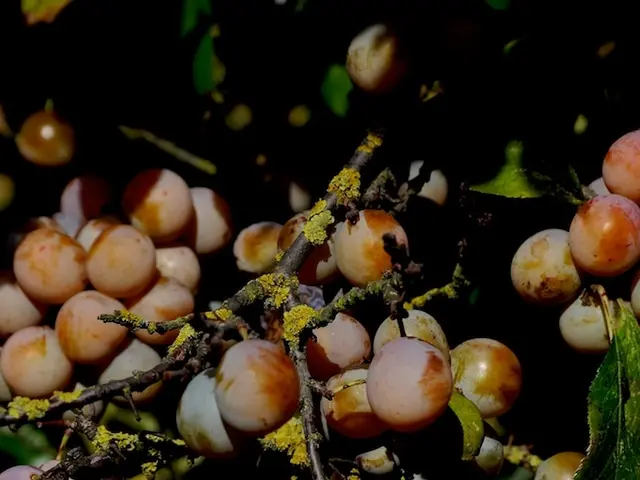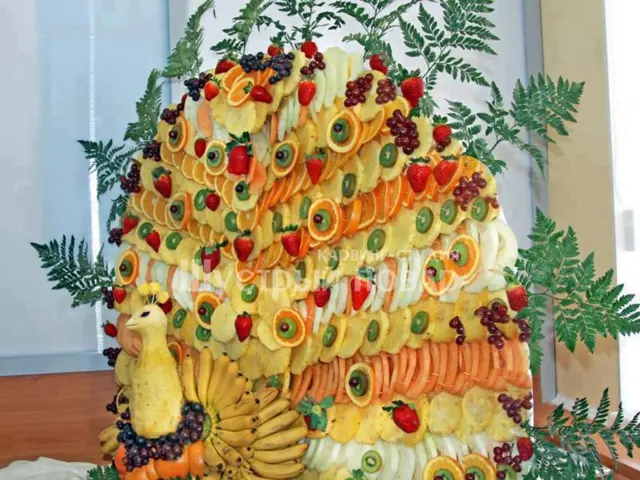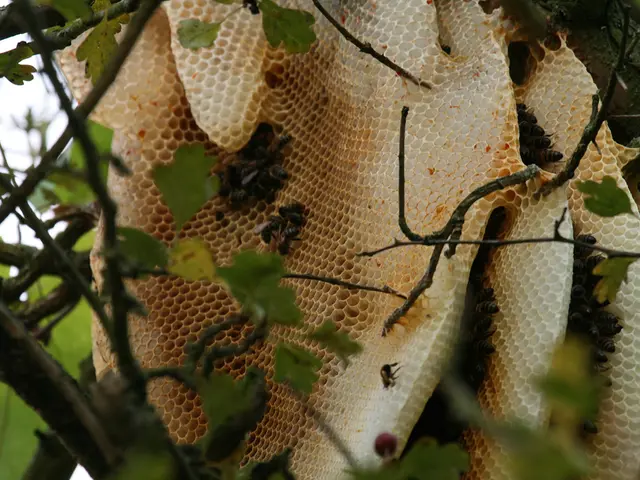Preparation Steps Following Your Final Spring Frost
Ready to kickstart your spring garden? After that chilly winter, it's time to rejuvenate your garden and plant some warm-weather delights! You may already have your cool-weather crops sprouting, but now's the perfect moment to give your garden a fresh boost. Here's what you need to know about planting, projects, and maintaining a vibrant spring garden.
Warm-Weather Wonders
Your last frost has passed, and the good news is, it's time to start planting those warm-weather crops! Here's a quick list of some amazing options:
Tomatoes on the Rise
Yes, tomatoes! They're frost-sensitive little devils, so be patient and wait for those nighttime temperatures to creep into the 50s. Once they do, you're good to go!
Direct Sow the Early Summer Stars
Get ready to sow the following seeds straight into your garden: beans, cucumbers, summer squash, and corn. Before you plant, check your soil temperature with a thermometer – it should be 65°F (18°C) or above.
Patience is a Virtue: Mid-Summer Delights
For crops like pumpkins, winter squash, melons, and black-eyed peas, wait for your soil to reach at least 70°F (21°C) or above. A little bit of waiting will boost the germination rate of those seeds.
Transplanting the Tropical Treasures
Peppers and eggplants need an early start indoors – either seed-starting or buying seedlings at a nursery. These crops thrive in hot weather, so hold off on planting until nighttime temperatures sit in the 50s or even preferably in the 60s.
Heat-Loving Happy Spaces
Okra is a heat-loving powerhouse, and it's your turn to show it some love! Wait until your soil temperature is at least 70°F (21°C) before you get planting. If you're growing it in a cooler climate, consider starting your okra seeds indoors a few weeks before planting.
Sweet Potato Paradise
As a heat-loving crop, sweet potatoes need a little extra attention. In warmer climates, you can plant them around 6 weeks after the last frost. If you're in a colder region, you might need to plant them earlier.
Herbs that Harmonize with Your Garden
After your last frost, most herbs are ready to plant! If you pick up seedlings from your local nursery, almost any herb will work. Remember, basil doesn't play well with the cold, so wait until nighttime temperatures are at least 50°F.
Some herbs, like basil and dill, are easy to grow from seed, so you can save some money by skipping the nursery. Cilantro might not be the best choice right now, since it dislikes hot weather and bolts quickly. Instead, save it for a fall or late winter planting.
The Project List
By now, you may still have a few projects on your to-do list. Here are some ideas to help you get started:
Construct Vertical Supports
Tomatoes, cucumbers, pole beans, and climbing peas need support to grow strong and high. Refer back to my previous posts about trellis options, tomato trellises, and other vertical solutions for inspiration.
Mulch Madness
beginning applying mulch to your spring plantings and summer transplants when plants are at least 6 inches high. Mulch helps keep moisture in the soil during heavy rains, prevents some soil-borne diseases, and regulates soil temperature.
Late Frost Protection
Have you ever thought the weather was warm enough – only to be caught off guard by a late frost? Don't worry – you can be ready with row covers and plastic covers to protect your plants.
Water Wise
Now is the best time to set up your drip irrigation or soaker hoses. Just be sure to avoid placing them where they might freeze.
Compost Corner
This is the perfect time to set up your compost system. Even if you mulch well, those pesky spring weeds will appear, and you should catch them before they bloom for the best compost.
Garden Maintenance Reminders
Not all garden tasks fall into the planting and projects categories. As your garden grows, remember to walk through it daily, enjoying the scenery and making note of any maintenance items you need to address, such as:
Thinning Seedlings
If you planted from seed and your seedlings are too close together, you might want to consider thinning them out for healthier, more mature plants.
Pruning Time
Begin pruning the lower stems of your tomato plants as they start to grow. Pruning helps prevent fungal diseases that can stem from stems and leaves that touch the ground.
Pest Patrol
Keep a close eye out for pests like cabbage worms and aphids. Walk your garden daily, and be prepared with my best practices for organic pest control to keep those pesky critters at bay.
I simply can't contain my excitement for spring! There's nothing quite like watching those warm-weather crops pop up and hearing the laughter of the garden as it springs back to life. What are you most looking forward to after that last frost?
Share on FacebookShare on X (Twitter)Share on PinterestShare on EmailShare on WhatsApp#### Free Resources
🌱 Which Warm-Weather and Heat-Loving Crops are Best for Spring Planting? 🌶️🥕🍅
- Embrace the garden with lifestyle changes by incorporating home-and-garden activities like planting warm-weather crops in your spring garden.
- For effective pest control during gardening, keep a close watch on plants and apply organic pest management practices to ward off common critters like cabbage worms and aphids.
- Transforming your garden isn't just about planting – projects such as constructing vertical supports, mulching, setting up compost systems, and installing drip irrigation can all contribute to a thriving home-and-garden.








